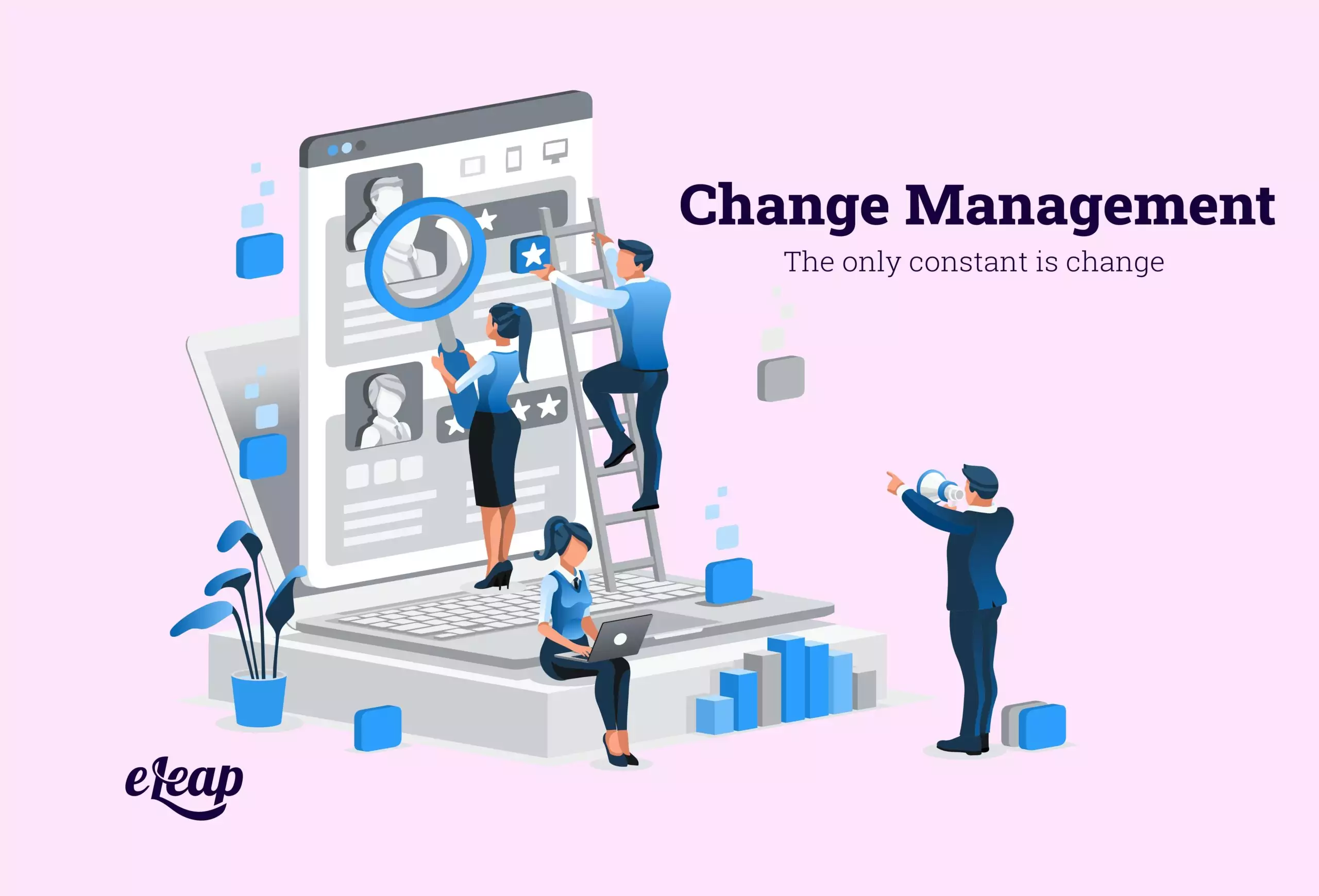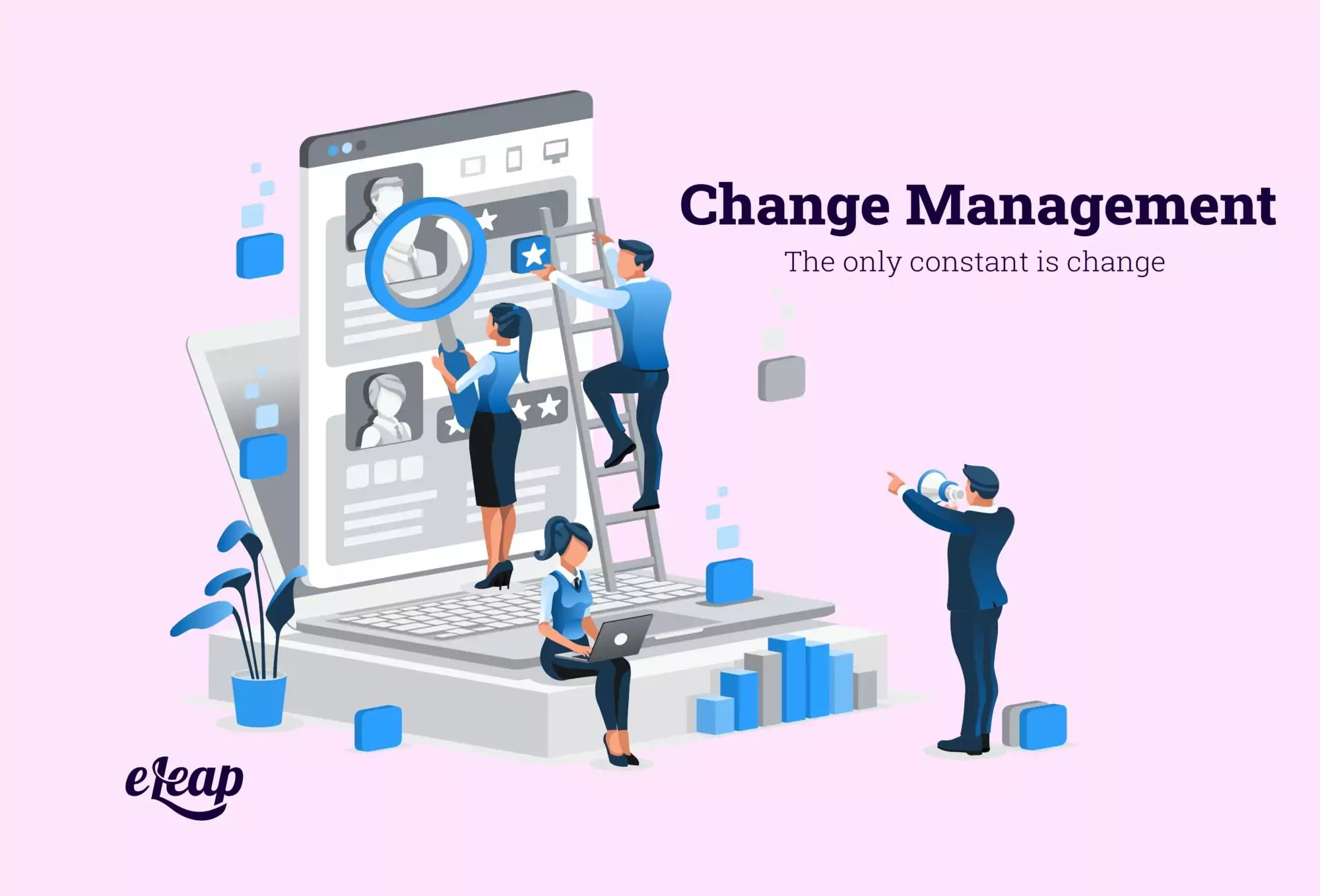Change Management
The only constant is change

Change management is an essential tool for the workplace leader or office head. Every single environment will inevitably change over time, albeit for workplace requirements, supply-demand evolution, employee needs, or competitors forcing a business into developing their offerings.

If an office lead or manager can cope with this change effectively, they will be able to keep their business running smooth and productively.
Definition of Change Management
We proffer that change management as the steps a workplace needs to take to seamlessly move from their current way of operations to the new, necessary way, without hampering productivity or incurring damage.
Why Change Management Is Important
Although it is obvious when change is happening and/or when it is necessary, many leaders feel stuck because they do not know how to effectively implement these changes or how to go about starting.
This can cause businesses to fall behind, employees to become frustrated, or important tasks to fall by the wayside, all of which can bring about negative effects that are hard to come back from.
Types of Change Management
There are three main types of change management, and having an overview of all of these can help an office leader decide which type to implement and set goals accordingly.
Individual
This type of change management refers to the specific people in the environment that is changing. If an office or workplace leader has a solid, working understanding of the strengths, weaknesses, needs, and desires of their group, then they will be able to effectively plan for how to support them during change.
This should be the foundational, first focus before other changes take place.
Organizational
Once you have taken care of individual needs to ensure buy-in of your team members, you can turn to the next step, which is the organization as a whole.
What are your current practices, office style, and daily routines? Are there issues that are constantly coming up or that keep productivity from happening easily? What office procedures are there that need to be handled for change to take place successfully?
Enterprise
This step goes all the way to looking at the larger parent organization, for example, Starbucks Corporate as opposed to the local franchise.
This can be the roles required by different employees on the hierarchy, company policies and procedures, hiring, etc. Although a parent organization has many parts, they all depend on each other to function without struggle. If one part is not working properly, this will trickle down to the rest, and create negative effects.
This can be frustrating for franchise owners or managers but addressing these issues can help the organization notice problems that corporate may not be aware of.
Types of Change Management Tools
There are a variety of options to choose from when researching a program or system to help your change management flow easily. Follow along for the important things to think about.
- User-Friendly Setup – People want things that are comfortable, that they are used to. Although a new system might come with plenty of benefits, it can be a struggle to learn a whole new way of doing things. If a system is easy and shows efficiency and ways to solve current problems from the beginning, it is easier to get group buy-in.
- The Right Tool for the Right Price – Although effective change management should be a high priority, no one wants to spend their entire office budget on one program. You will want to find a balance between product offerings and budget-friendliness.
- How It Integrates – All workplace systems depend on each other and work together. If you change one and it negatively affects the rest of the processes, this will send you down a rabbit hole of trying to get back to where you were. Inversely, if one process change is positive, it will (hopefully) bring positive effects or changes to every other area.
Change Management Models
There are a few different change management models out there that can help your organization in myriad ways. These are detailed below so that you can be as educated as possible when choosing what will work best for your team and needs.
ADKAR Model
This type of model is focused on the well-being of the individual employees. It makes sure that each person on your team is ready and prepared for what is ahead. This model ensures readiness by specifying five sections of preparedness:
- Awareness – Are team members informed about upcoming changes?
- Desire – Are they interested? Do they have buy-in Will they be involved?
- Knowledge – How well are they educated about what will be required?
- Ability – Are they equipped with the necessary skills?
- Reinforcement – Create a workspace that will easily be able to accommodate change.
Lewin’s Model
In this change management model, the creator, Lewin, emphasizes a structure that leads itself to change over three steps. These steps are as follows:
- Unfreezing – deconstructing the previous systems and structures to make room for the new ones
- Change – the actual actions of bringing in the new ways of doing things
- Freeze – solidifying and enabling the said changes to stay in place for the long term
Kotter’s Model
Sometimes change management needs to be more detail-oriented, and when this needs to happen, Kotter’s way of change management is the most helpful. To do this, you would take steps along this path:
- Create urgency – Show the need for change and what others are doing.
- Team building – Show who has the skills and strengths necessary.
- Form a plan and vision – Create specific steps for everyone to follow based on their skill sets.
- Communication – Make sure all channels are open and easy for team members to get their ideas and experiences to the right place.
- Enabling of action – Take away situations or procedures that might create hurdles that would be difficult to overcome.
- Celebrate small wins – Break up goals into small pieces that are easy to achieve.
- Reinforce change – Create systems that are implemented across to board so that the change is a part of the whole culture of the workplace.
- Stay the course – Change takes time, so keep your eye on the prize and push forward for success.
McKinsey’s 7-S Model
This one is easy to remember! It has the following seven steps, all with the alliterative ‘s’ beginnings.
- Strategy – your specific plan for the process of change
- Structure – making sure that this plan is in line with the organization’s structure
- Systems – the tools that team members need to execute and be successful in the change management process
- Shared Values – communication of the goals and expectations
- Style – each leader across the board working in the same way
- Staff – the perfect team who will accomplish the goals you have set
- Skills – training and models for empowerment and embedding change
Kübler-Ross’s Model in Five Stages
This type of change management process emphasizes the importance of employees’ desires and needs and encourages the manager or employer to gain a deep understanding of their employees. (You might recognize this model if you or someone you love has ever gone to therapy or been through a recovery program!)
- Denial – In this stage, people want to stick with what they know and, thus, they resist the changes being brought about.
- Anger – When people realize that there is no going back, they might rebel or express frustration that they are being ‘forced’ into something uncomfortable.
- Bargaining – Team members will try to negotiate ways to get back to the previous systems, and give reasons why the new, proposed ideas will not work.
- Depression – When all the above steps do not show positive effects for the frustrated employee, they might decrease productivity, show a lowered amount of energy or excitement, or even lessen their commitment to the cause.
- Acceptance – Finally, people will come to terms with the changes that are happening and that if they want to be successful themselves, they will need to join up and get with the program.
Benefits of Change Management Process
If you want to keep your business in line with the times and continue to be successful and productive, educating yourself and recognizing the needs of your company is the first step.
Then, recognizing the needs, strengths, and weaknesses of your team can be combined with the above knowledge to keep employees or team members happy and productive in the process.
Becoming a manager or team leader who effects positive change in a positive way will mean that everyone benefits and that these positive changes trickle down to every sector of the company and every person involved.
Once you have implemented change once, you will learn valuable lessons because the need for it is sure to come up often throughout your time as a leader and manager!
Listen to your team members, take feedback with a grain of salt, and always be thinking ahead to what the next steps in the process will be.